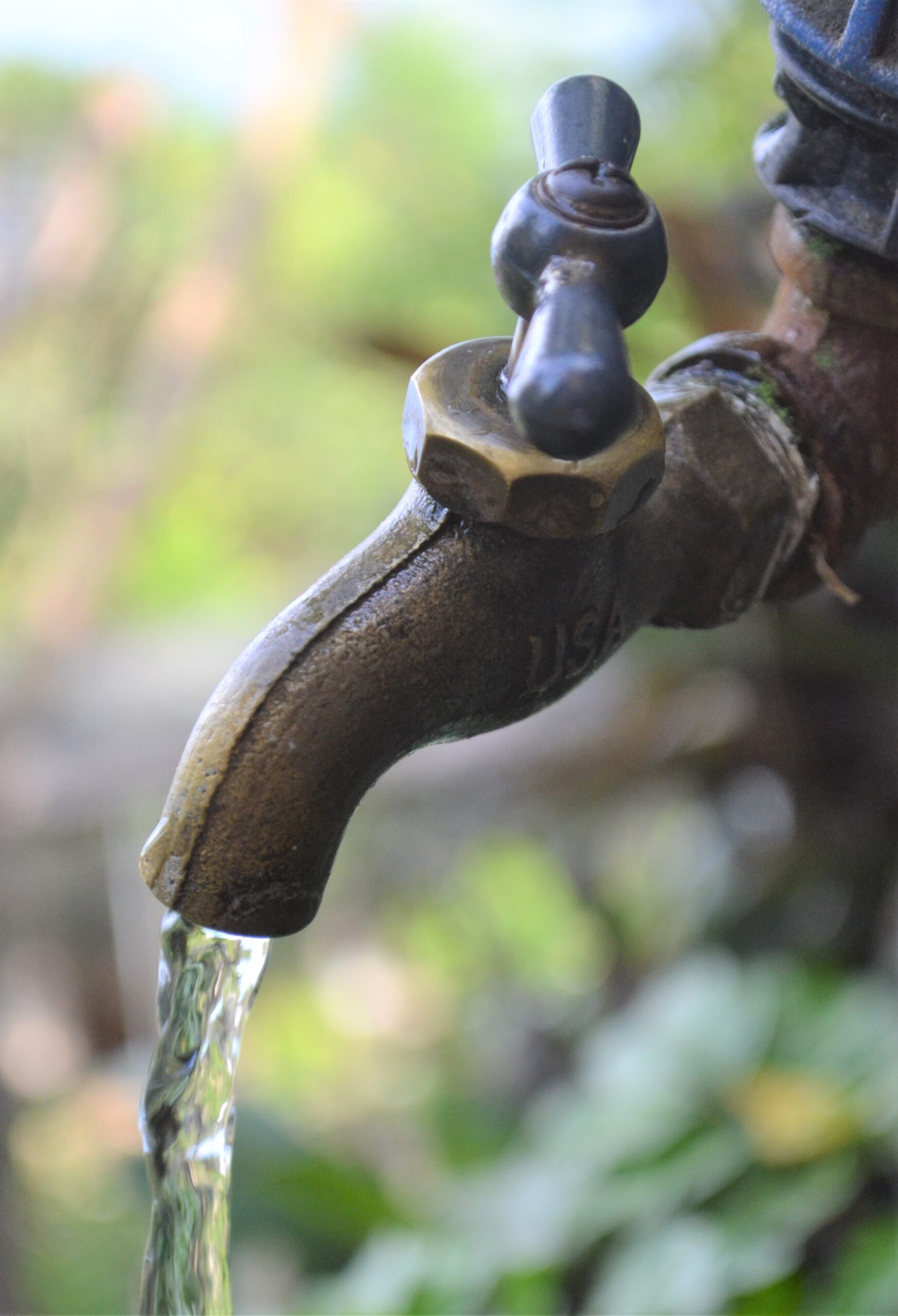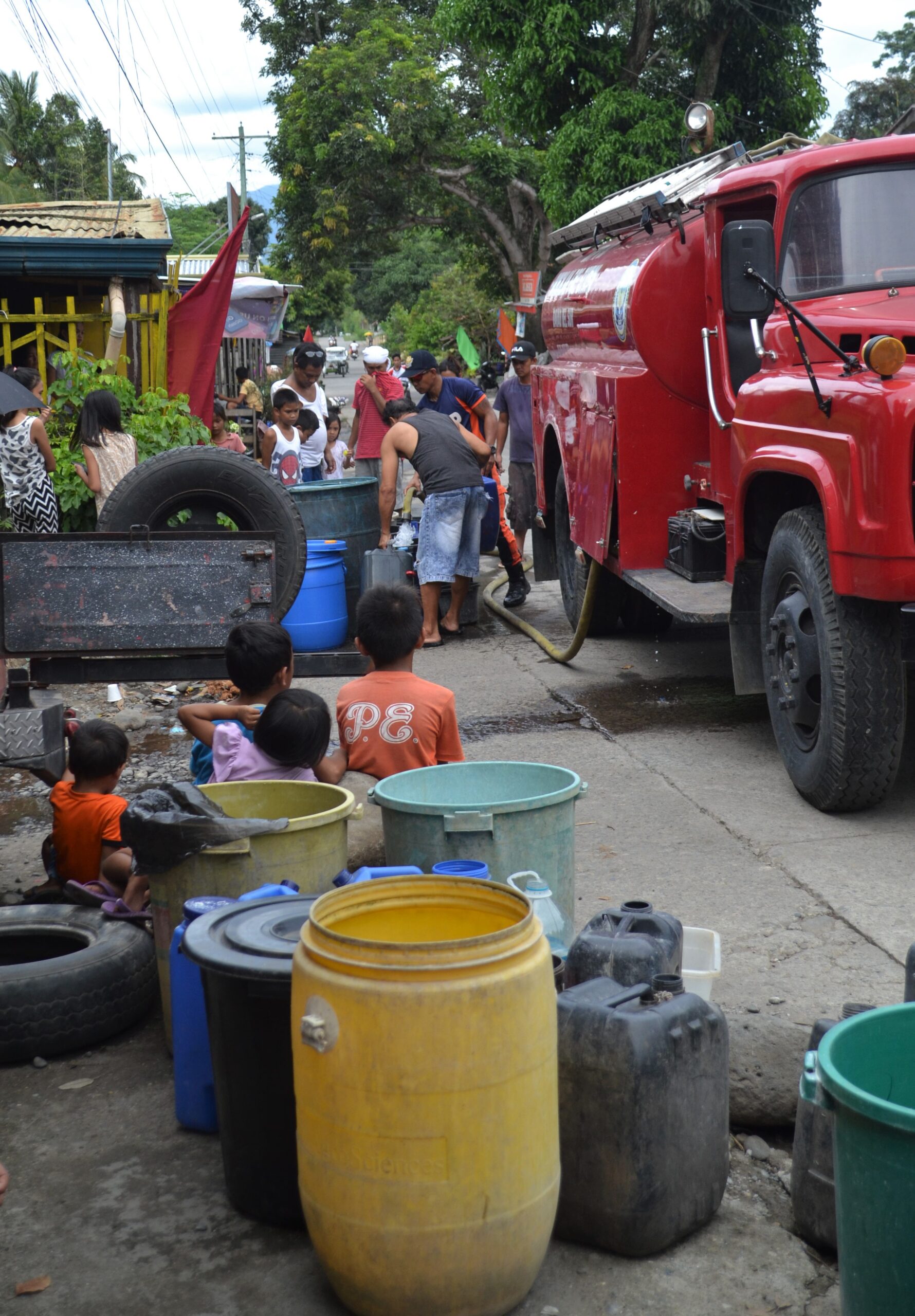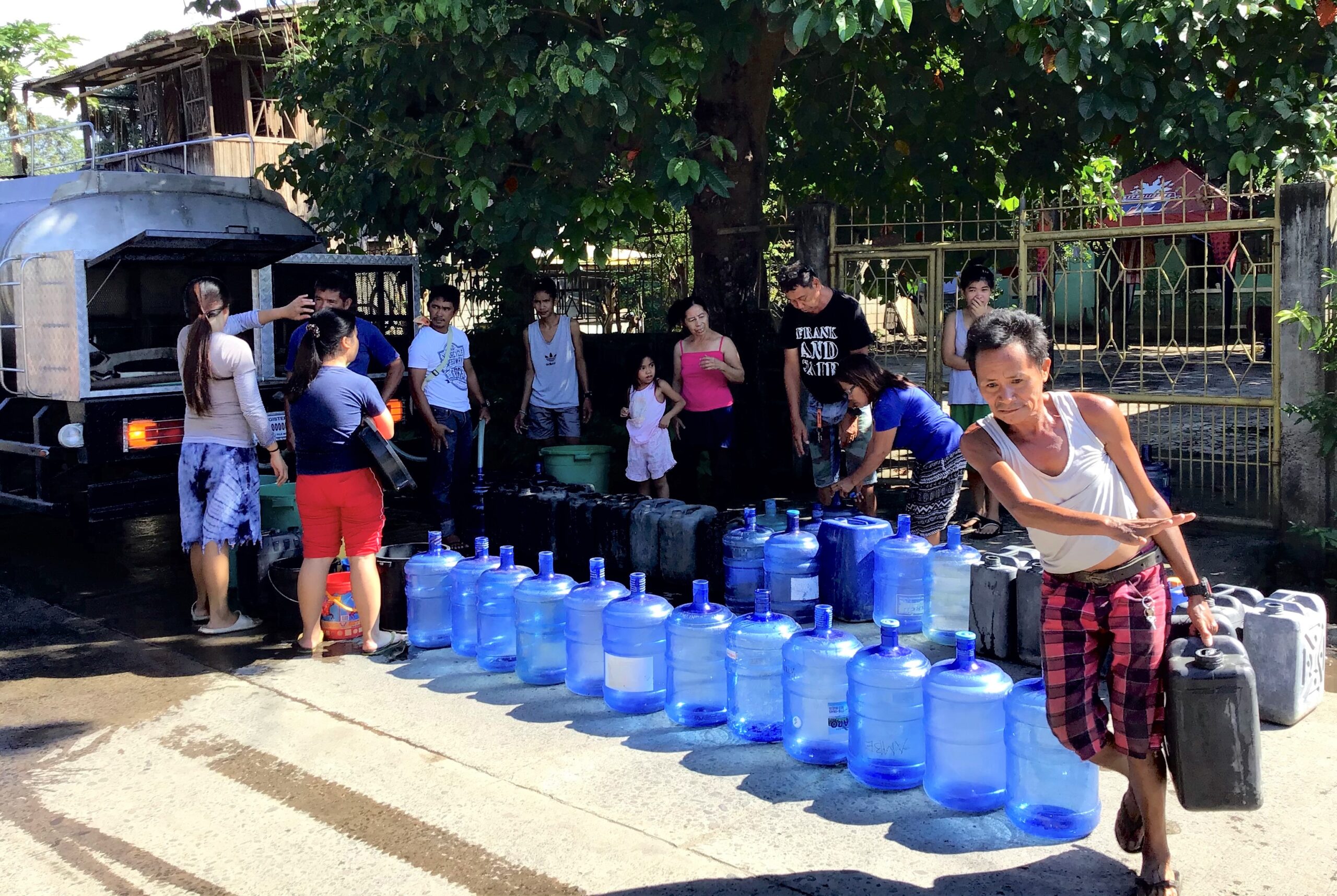Text and Photos by Henrylito D. Tacio
“Wasted water,” said the September 7 headline of Edge Davao.
The news report talked of some excavation works being done by private contractors, which unfortunately busted some water pipes. As a result, there was water loss, which could have been used by customers of Davao City Water District (DCWD).
“Water is a precious commodity and where wasted, affects the household, the community, and the local economy,” said the editorial of the paper that same day.
“Water loss is passed on to the supply of consumers and at the rate we are losing water to busted pipes, the DCWD said it can already add one or two production wells,” the editorial also stated.
DCWD, which started serving the people of Davao City in 1973, was operated as a quasi-public entity until 1992, when it was declared a government-owned and controlled corporation.
The environmental group Interfacing Development Interventions for Sustainability (IDIS) said the Davao City Water District (DCWD) gets 98% of its water supply from groundwater.
When DCWD started extracting underground water to supply the consumers, the population was barely 600,000, according to veteran journalist Jun Ledesma. Today, the population more than doubled – nearly 2 million – and “the demand for water conversely increased.”
“For over 40 years, Davao City has been heavily reliant on groundwater,” said Apo Agua, a subsidiary of Aboitiz InfraCapital. “But when groundwater is being extracted at a faster pace than the replenishment of aquifers, wells can dry up and cause the land to shrink.
“If groundwater decreases relative to sea level, saltwater can seep through the deep well and contaminate the water supply,” Apo Agua warned.
IDS, however, forecasts Davao City “will experience a deficit of 69 million cubic meters (45% of the demand) of groundwater” by 2050 – that’s 28 years from now.
That’s bad news, indeed. Water, after all, is fundamental for life and health. “The human right to water is indispensable for leading a healthy life in human dignity,” the United Nations Committee on Economic, Cultural, and Social Rights pointed out. “It is a prerequisite to the realization of all other human rights.”



When people talk about the different sources of water, they usually think of surface water sources like lakes, rivers, and streams. What most people don’t know is that approximately 97% of all the usable freshwater is actually groundwater.
Groundwater, as defined by National Geographic Society, is water that has infiltrated the ground to fill the spaces between sediments and cracks in rock. It is replenished or recharged by rain and seepage from rivers.
“Groundwater is used for drinking by about 50% of the people in the country,” said a World Bank report. “Based on the water rights granted by the National Water Resources Board, 49% of groundwater is consumed by the domestic sector, and the remaining shared by agriculture (32%), industry (15%), and other sectors (4%).”
The World Bank report noted that about 60% of the groundwater extraction is without water-right permits, resulting in indiscriminate withdrawal. “A high percentage (86%) of piped-water supply systems uses groundwater as a source.”
During the recent World Water Week celebration, water experts from all over the world chorused that the groundwater is being overused, polluted, and neglected. That’s very alarming!
Nearly 50% of the world’s urban population depends on underground water sources, Chief Audrey Azoulay of the United Nations Educational, Scientific and Cultural Organization (UNESC0) said that “more and more aquifers are being polluted, overexploited, and dried up by humans, sometimes with irreversible consequences.”
Aquifers are underground layers of rock that are saturated with water that can be brought to the surface through natural springs or by pumping.
The World Bank report said pollution of groundwater may come from domestic wastewater, agricultural runoffs, and industrial effluents. “This occurs when contaminants reach the aquifer or water table in the form of leachate,” it explained.
The report cited domestic wastewater as the main contributor of bacterial contamination to the groundwater supplies. The presence of coliform bacteria in drinking water supplies can cause water-borne diseases like diarrhea, cholera, dysentery, and hepatitis A, among others.
Another problem the report cited is saline water intrusion. This is caused by over-exploitation or excessive withdrawal of groundwater. As a result, the water availability for domestic usage, including drinking, is reduced.
In Davao City, a water crisis is indeed in the offing.
Editha Z. Caduaya, in a newsline.ph feature, believed DCWD can no longer provide water for everyone in Davao City. “I wouldn’t say the DCWD people like every time they say we have enough water,” she wrote.
She knows what she is talking about. For instance, in Cabantian, where she lives, “some parts of my own barangay do not have a 24/7 supply of water.” She added, “I am sick and tired of looking at residents of barangay Langub going to their relatives to fetch water day-in and day-out.”
In order to address this water problem, the DCWD teams up with Apo Agua to come up with the Davao City Bulk Water Supply Project (DCBWSP). Created in 2015, it aims “to limit the extraction of groundwater to preserve the city’s water table and save it from irreversible environmental degradation such as land subsidence and saltwater intrusion.”
Water is life. Without water, a person may cease to exist.
“A household of five needs at least 120 liters per days to meet basic needs – for drinking, food preparation, cooking and cleaning up, washing and personal hygiene, laundry, house cleaning,” noted David Satterthwaite and Gordon McGranahan in their collaborative report published in the State of the World 2007.
Water is more precious than oil. It’s even more sparkling than gold. “Water, not oil, is the most precious fluid in our lives, the substance from which all life on the earth has sprung and continues to depend,” wrote Maryann Bird in a Time article.

